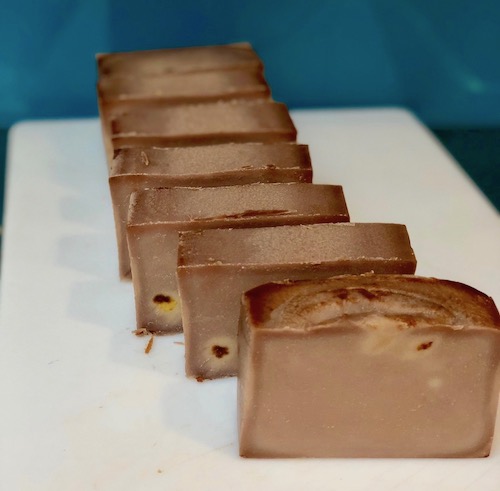Cold-process soapmaking in pictures
Cold-process soapmaking in pictures
This is just to help you get a feel for the process.
Before you embark on making soap, read the instructions very carefully!
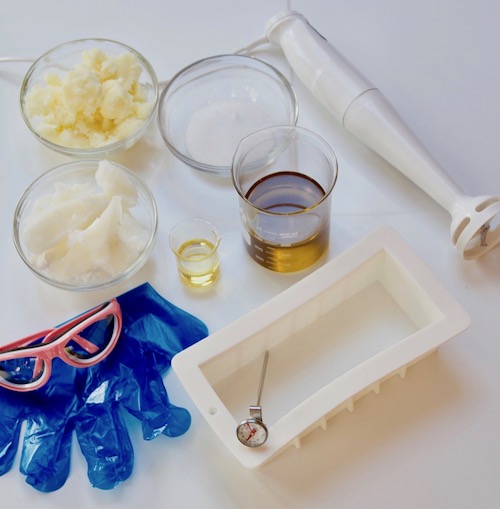
1. What you'll need to get ready before you start.
- Weigh and measure your ingredients. For our recipe we're using 230g organic palm oil, 230g RBD coconut oil, 230g pomace olive oil, 104g sodium hydroxide and 30ml chocolate fragrance oil. You will also need 230g of COLD water.
- Silicon loaf mould. (If you’re NOT using a silicon mould, you need to prepare your container by greasing it and lining it with baking paper.)
- Thermometer.
- Stick blender.
- Heatproof glass jug for your lye mixture.
- Large stainless steel pot.
- Protective eye wear.
- Gloves.
- Spatula.
- Sheet of baker paper.
- Read through the instructions one last time - it can be all go once you get started!
2. Gently melt the solid oils.
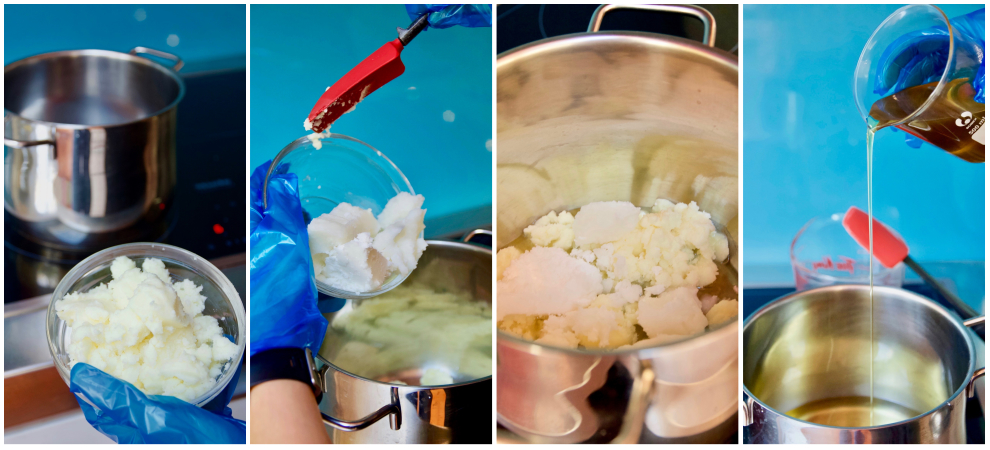
Add the palm oil and coconut oil to your large pot and gently melt together. Once they're melted take them off the heat and add the olive oil. (Pro tip: by adding the unheated olive oil last it brings the temperature of your melted oils down so you don't have to wait as long.)
3. Prepare your lye mixture.
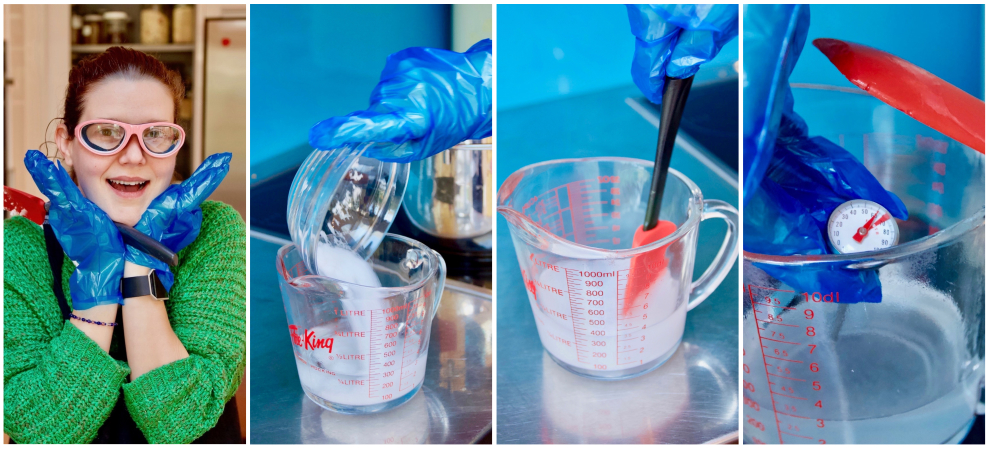
Make sure you've got your gloves and safety glasses on, this is the dangerous part! Sodium hydroxide will burn your skin and clothes if it comes in contact. If it does, don’t panic. Dab the area with vinegar and/or flush with water for as long as it takes to take the sting away.
Add the sodium hydroxide to COLD water. This mixture is called lye. It will heat up a lot and very quickly so be careful. Try not to breathe in the fumes, it can be helpful to do this near an extractor fan.
You will have to wait for both your lye and your oil to cool down to 40°C. (Ignore our photos at 60°C.)
4. Combine your mixtures.

Once your lye and oil both reach 40°C pour the lye into the oil. Start stirring with a spatula to gently combine but then quite quickly you'll want to start using your stick blender. It will start to thicken up very quickly.
5. Add your scent.
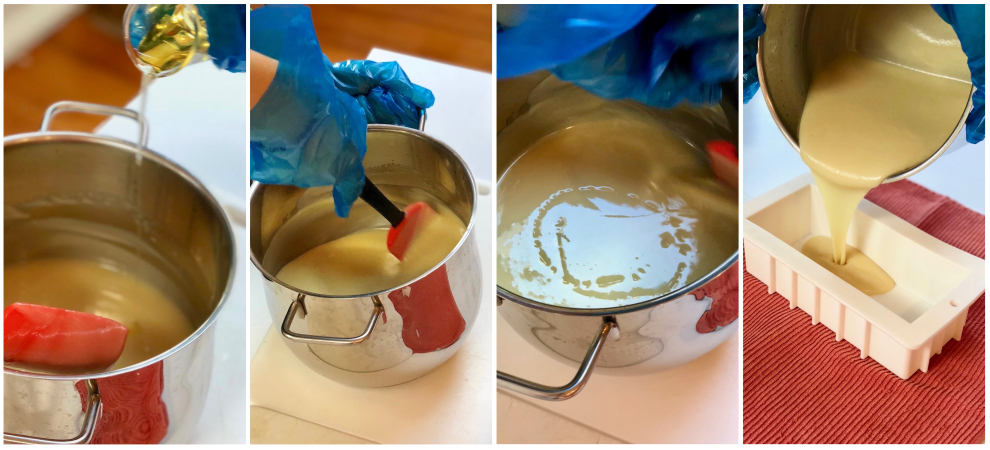
When the mixture is getting thicker but before it becomes too thick add your essential oil or fragrance oil.
Be aware that some oils, most commonly fragrance oils, may cause your soap to seize, which means it will turn it hard almost immediately. So make sure you've got your mould ready to pour into before you add fragrance just in case.
We're using chocolate fragrance oil which we know doesn't cause this. We have done our best to test all of our oils and we have made notes on their pages as to whether or not they have this effect.
Stir your now scented mixture with the spatula, as it gets thicker it will start to "trace", which means as you lift the spatula out of the mixture the bits that fall of will sit on top of the mixture in the pot. See picture three. Once that starts happening you're ready to pour.
6. Pour and make a soap burrito.
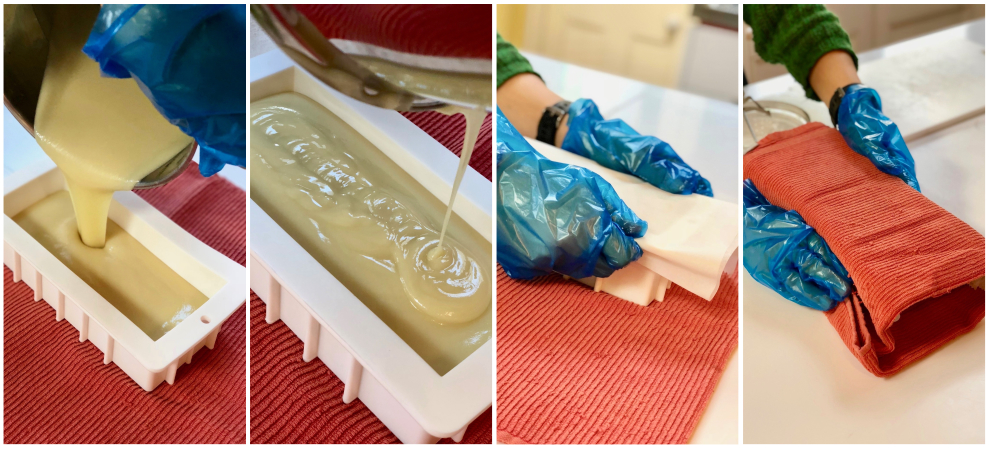
Have your mould ready laid out on an old towel. Pour all your mixture into the mould, scraping the pot clean with the spatula. Place a sheet of baking paper over the top to protect the top and wrap the soap up tightly in the towel. You may want two towels, one going the oposite way, to make sure it is completely covered. Once wrapped up tightly in a little towel burrito leave it for 24 hours to saponify.
7. Take out of the mould.
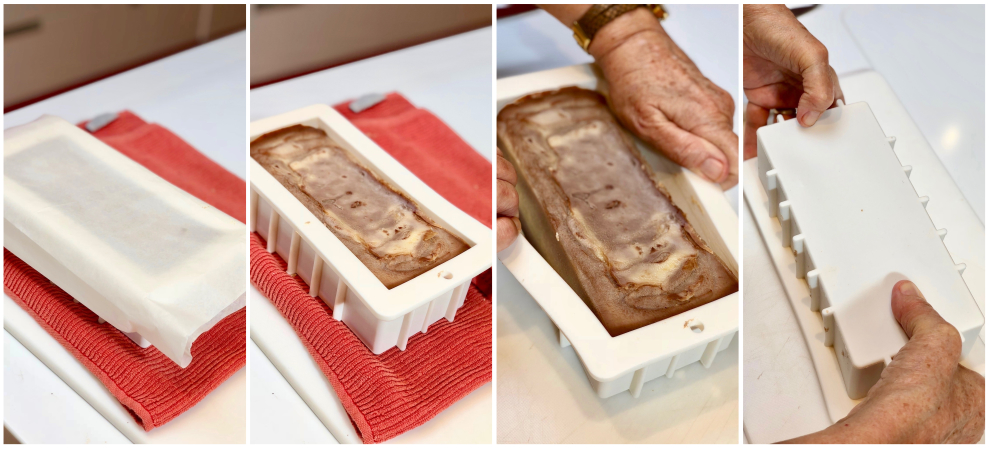
After 24 hours your soap should have set hard, take it out of the mould by pulling the walls of the mould away from the soap and turning it upside down and separating it from the bottom.
8. Cut into bars.
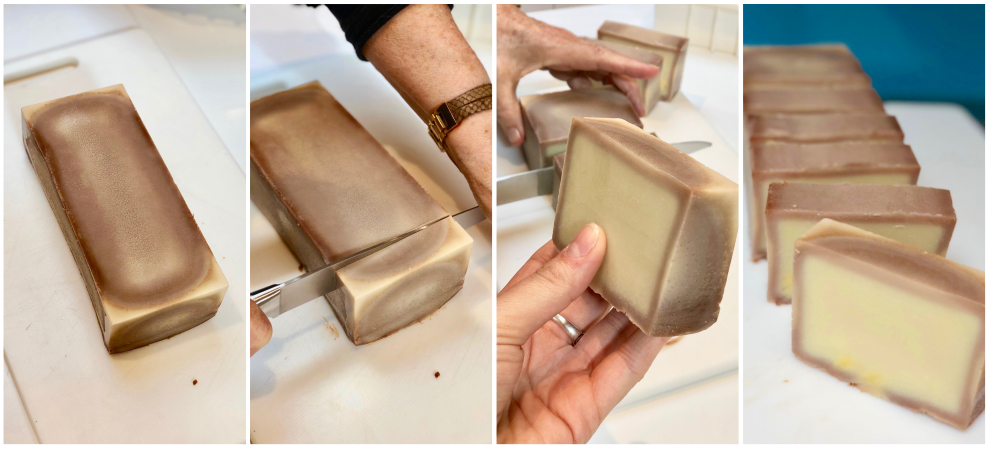
Using a kitchen knife or soap cutter cut your soap of soap up into bars. Separate the bar out to dry.
Wait six weeks for them to cure before using them, at this point they are still too acidic.
As you can see the chocolate fragrance oil has started to make our soap darker around the edges where it has cooled down and been exposed to more air.
The photos below are 48 hours later and now they're entirely brown. Essential oils and fragrance oils can often have this effect on your finished product even if the oil itself has was relatively clear going in.
Enjoy your beautiful handmade cold-processed soap!
